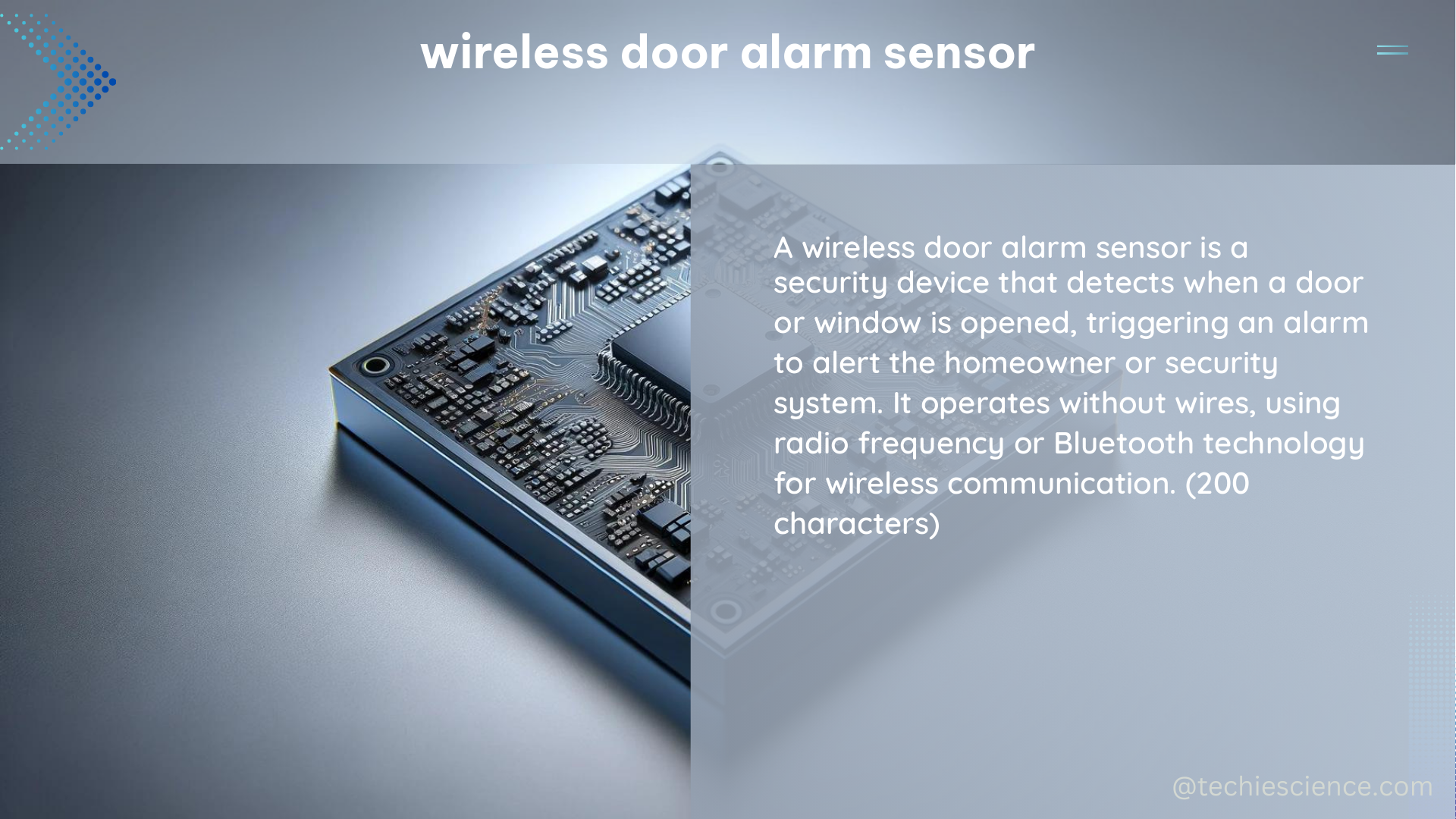Wireless door alarm sensors are a crucial component in modern home security systems, designed to detect and alert homeowners or security services when a door is opened or tampered with. These battery-powered sensors utilize wireless technology to communicate with the main security system, providing a reliable and convenient solution for securing your home.
Understanding the Technical Specifications
When it comes to wireless door alarm sensors, the technical specifications play a vital role in ensuring optimal performance and longevity. Let’s dive into the key details:
Battery Life and Power Efficiency
One of the most important factors in wireless door alarm sensors is their battery life. These sensors are often installed in hard-to-reach locations, making battery replacement a challenging task. According to the search results, the sensors should be capable of lasting for years on a single battery charge.
To achieve this impressive battery life, the sensors must be designed with power efficiency in mind. The Arduino forum discussions suggest that the sensor should be in deep sleep mode 99.9% of the time, with the wireless transmitter turned off except when transmitting data. This approach ensures efficient energy management, enabling the sensor to operate for an extended period on a single battery.
Wireless Communication Range
The wireless communication range of the door alarm sensor is another crucial specification. The Amcrest SmartHome WiFi Door Alarm System, for example, boasts a communication distance of 328 feet in an open field. This extensive range allows for flexibility in sensor placement and ensures reliable connectivity with the main security system.
Sensor Compatibility and Scalability
Versatility is key when it comes to wireless door alarm sensors. The Amcrest system supports up to 32 door/window sensors and PIR Motion Sensors, which can be added to the WiFi alarm station. This scalability allows homeowners to customize their security setup to meet their specific needs, whether it’s a small apartment or a large multi-story home.
Voice Prompts and Two-Way Communication
Advanced wireless door alarm sensors, such as the Amcrest system, offer additional features like voice prompts and two-way communication. These capabilities enhance the user experience, providing homeowners with real-time feedback and the ability to interact with the security system remotely.
DIY Wireless Door Alarm Sensor: Technical Considerations

For those interested in building their own wireless door alarm sensor, the Arduino forum discussions provide valuable insights. Here are some key technical considerations:
Sensor Design and Components
The sensor design should incorporate a microcontroller, such as an Arduino or ESP32, along with a wireless communication module (e.g., 433 MHz or Bluetooth Low Energy) and a door/window contact switch. The sensor should also include a power management system to ensure efficient battery usage.
Wireless Communication Protocol
The choice of wireless communication protocol is crucial for the sensor’s performance and compatibility with the main security system. Popular options include 433 MHz, Bluetooth Low Energy (BLE), and Wi-Fi. Each protocol has its own advantages and trade-offs in terms of range, power consumption, and integration with smart home ecosystems.
Sensor Firmware and Programming
The sensor’s firmware and programming are essential for its functionality and reliability. The firmware should be designed to minimize power consumption, efficiently manage the sensor’s sleep and wake cycles, and ensure reliable data transmission to the security system.
Sensor Enclosure and Mounting
The sensor’s enclosure should be designed to protect the internal components from environmental factors, such as moisture and dust. The mounting mechanism should also be secure and easy to install, allowing for seamless integration with doors and windows.
Conclusion
Wireless door alarm sensors are a crucial component of modern home security systems, providing homeowners with reliable and convenient protection against intruders. By understanding the technical specifications, power efficiency, and customization options, you can choose or build a wireless door alarm sensor that meets your specific security needs. Whether you opt for a commercial solution or a DIY approach, these sensors offer a practical and effective way to safeguard your home.
References:
- Insanely Cheap DIY Wireless Window/Door Sensors
- Wireless Sensor Networks for Home Automation and Security: A Survey
- Amcrest SmartHome Wireless Door Alarm System
- CR2032 Powered Door Sensor
- Interact with 433MHz Wireless Door Sensors

The lambdageeks.com Core SME Team is a group of experienced subject matter experts from diverse scientific and technical fields including Physics, Chemistry, Technology,Electronics & Electrical Engineering, Automotive, Mechanical Engineering. Our team collaborates to create high-quality, well-researched articles on a wide range of science and technology topics for the lambdageeks.com website.
All Our Senior SME are having more than 7 Years of experience in the respective fields . They are either Working Industry Professionals or assocaited With different Universities. Refer Our Authors Page to get to know About our Core SMEs.